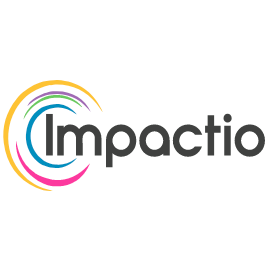What Does a GO Developer Do?

Go, also known as Golang, short for Go language, is the only programming language developed by Google. You might think, “if Google developed it, well… it must be good” And you are right, developers love it.
The programming language is, concurrent, functional, imperative, and object-oriented.
- A concurrent programming language is one that simultaneously executes processes of threads by structuring a program.
- Functional programming is programs that are composed of applying and composing functions.
- Imperative programming is a programming paradigm that uses statements that change a program's state.
- Object-oriented programming (OOP) is a programming paradigm based on the concept of “objects”, which can contain data, in the form of fields (often known as attributes or properties), and code, in the form of procedures (often known as methods).
The main goal of Go is to make programming more productive. It's based on concurrency mechanisms, as previously explained it's a concurrent programming language. This allows us to get the most out of multicore and networked machines. Go compiles fast to machine code as it is dynamic and interpreted.
Go is an open-source programming language that makes it easy to build efficient software. You can build robust or simple applications with the same simplicity.
It´s not one of the most used programming languages, but it surely adds to your technology stack if you are interested in this language. Here´s how a job opportunity for this position looks like.
"We are looking for a Go developer that understands and codes in this language. As a developer, you should be proficient in its paradigms and syntax. Go´s developers build Go packages and programs that are scalable. As a Go developer, you will be a part of the software team, where we expect a commitment to build quality products, writing testable and maintainable code.
To be fit for the job, the developer must have experience with the Go frameworks and tools, such as Godep, Sltr, Stringer. The most used Go framework to help your development is Revel.
What caused Google to developers to develop Go?
Go developers disliked C++, based on this they decided to develop a new programming language that could be similar because of its need, but still, be better based on their own implementation.
Go was first announced in 2009 and launched in 2012. As we can see, Go has been in development mode for 3 years. Still today, Go is widely used in production at Google and other companies
How is Go structured?
Go is based on C and C++ but has a greater goal: to be simple and safe. The language consists of syntax and an environment that adopts patterns. It has a fast compilation and an interface system based on virtual inheritance.
Go´s syntax includes a feature that doesn’t need the programmer to specify the types of variables used, in contrast to C. Semicolons still terminate statements, in both languages.
Go has built-in types, such as numeric, Booleans, and character strings. Dynamic arrays are available as “slices” These have a length and a capacity specifying when a new memory is needed to expand the array. Pointers are available for all types. Operators, the same as in C, happen implicitly through the method “call”
The Go distribution includes tools for building, testing, and analyzing code. Here are some examples:
- "go build" builds Go binaries using the information in the source files themselves.
- “go test” works for unit testing and microbenchmarks.
- “go fmt” formats code.
- “go get” retrieves and installs remote packages.
- “go vet” is a static analyzer looking for potential errors in code.
- “go run” is a shortcut to build and execute code.
- “go doc” displays documentation and serves it via HTTP.
- “gorename” renames variables and functions.
- “go generate” invokes code generators.
In conclusion, Go was built by a team of engineers from Google. It was announced in 2009 and launched in 2012. The programming language is open-source and works from small applications to building scalable and robust applications. It is a concurrent, functional, imperative, and object-oriented language. The main goal of Go is to make programming more efficient and productive. It was built after programmers complained about some parts of C and C++. Well, they had a great idea, not every developer that complains about how a language works and develops a language itself. Despite Go is based on C, it is an independent programming language. Go developers must know C, Go frameworks, and tools, such as Godep, Sltr, Stringer. The most used Go framework to help your development is Revel. In contrast to C code, in Go developers don’t have to specify the types of variables used. If you are planning to add Go to your technology stack, be sure to have a strong background in C first.
Related Articles

Go, also known as Golang, short for Go language, is the only programming language developed by Google. You might think, “if Google developed it, well… it must be good” And you are right, developers love it.
The programming language is, concurrent, functional, imperative, and object-oriented.
- A concurrent programming language is one that simultaneously executes processes of threads by structuring a program.
- Functional programming is programs that are composed of applying and composing functions.
- Imperative programming is a programming paradigm that uses statements that change a program's state.
- Object-oriented programming (OOP) is a programming paradigm based on the concept of “objects”, which can contain data, in the form of fields (often known as attributes or properties), and code, in the form of procedures (often known as methods).
The main goal of Go is to make programming more productive. It's based on concurrency mechanisms, as previously explained it's a concurrent programming language. This allows us to get the most out of multicore and networked machines. Go compiles fast to machine code as it is dynamic and interpreted.
Go is an open-source programming language that makes it easy to build efficient software. You can build robust or simple applications with the same simplicity.
It´s not one of the most used programming languages, but it surely adds to your technology stack if you are interested in this language. Here´s how a job opportunity for this position looks like.
"We are looking for a Go developer that understands and codes in this language. As a developer, you should be proficient in its paradigms and syntax. Go´s developers build Go packages and programs that are scalable. As a Go developer, you will be a part of the software team, where we expect a commitment to build quality products, writing testable and maintainable code.
To be fit for the job, the developer must have experience with the Go frameworks and tools, such as Godep, Sltr, Stringer. The most used Go framework to help your development is Revel.
What caused Google to developers to develop Go?
Go developers disliked C++, based on this they decided to develop a new programming language that could be similar because of its need, but still, be better based on their own implementation.
Go was first announced in 2009 and launched in 2012. As we can see, Go has been in development mode for 3 years. Still today, Go is widely used in production at Google and other companies
How is Go structured?
Go is based on C and C++ but has a greater goal: to be simple and safe. The language consists of syntax and an environment that adopts patterns. It has a fast compilation and an interface system based on virtual inheritance.
Go´s syntax includes a feature that doesn’t need the programmer to specify the types of variables used, in contrast to C. Semicolons still terminate statements, in both languages.
Go has built-in types, such as numeric, Booleans, and character strings. Dynamic arrays are available as “slices” These have a length and a capacity specifying when a new memory is needed to expand the array. Pointers are available for all types. Operators, the same as in C, happen implicitly through the method “call”
The Go distribution includes tools for building, testing, and analyzing code. Here are some examples:
- "go build" builds Go binaries using the information in the source files themselves.
- “go test” works for unit testing and microbenchmarks.
- “go fmt” formats code.
- “go get” retrieves and installs remote packages.
- “go vet” is a static analyzer looking for potential errors in code.
- “go run” is a shortcut to build and execute code.
- “go doc” displays documentation and serves it via HTTP.
- “gorename” renames variables and functions.
- “go generate” invokes code generators.
In conclusion, Go was built by a team of engineers from Google. It was announced in 2009 and launched in 2012. The programming language is open-source and works from small applications to building scalable and robust applications. It is a concurrent, functional, imperative, and object-oriented language. The main goal of Go is to make programming more efficient and productive. It was built after programmers complained about some parts of C and C++. Well, they had a great idea, not every developer that complains about how a language works and develops a language itself. Despite Go is based on C, it is an independent programming language. Go developers must know C, Go frameworks, and tools, such as Godep, Sltr, Stringer. The most used Go framework to help your development is Revel. In contrast to C code, in Go developers don’t have to specify the types of variables used. If you are planning to add Go to your technology stack, be sure to have a strong background in C first.
Related Articles
